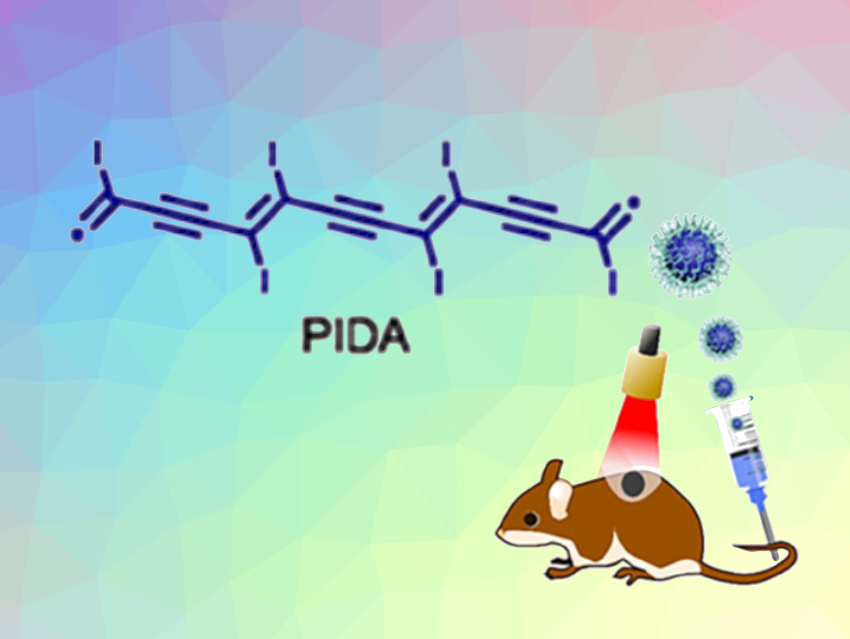Phototherapy uses light to aid the treatment of cancer. In this approach, a photosensitizer converts absorbed light into thermal energy (photothermal therapy, or PTT) or causes the formation of reactive oxygen species that can induce cell death (photodynamic therapy, or PDT). The efficacy of phototherapy relies heavily on the photoconversion efficiency of the photosensitizer used.
As the energy dissipation pathways of the photosensitizer compete directly with that of its fluorescence (FL) emission, the FL emission needs to be sacrificed to maximize the energy input of cancer treatment. Adding heavy atoms on the π-conjugated systems and aggregation-caused quenching are two effective methods to turn off the FL emission of photosensitizers, which could boost the phototherapeutic efficacy.
Following this approach, Liang Luo, Huazhong University of Science and Technology, Wuhan, China, and colleagues have developed an all-iodine-substituted polydiacetylene, poly(diiododiacetylene) (PIDA), which shows a high near-infrared (NIR) absorption with completely blocked FL, as well as both highly efficient reactive oxygen species generation and photothermal conversion.
To obtain PIDA in a form that is useful for systemic administration, the team performed the polymerization of monomers within nanocrystals and obtained homogenous PIDA nanospheres. An in-vivo study on a tumor-bearing mouse model showed that PIDA nanospheres almost eliminated the tumor in 16 days and prolonged the survival time of mice to over 60 days.
- Atomic‐iodine‐substituted polydiacetylene nanospheres with boosted intersystem crossing and nonradiative transition through complete radiative transition blockade for ultraeffective phototherapy,
Dan Zhao, Lingling Zhang, Mingming Yin, Zhenyan He, Fang Fang, Minle Zhan, Sidan Tian, Fanling Meng, Liang Luo,
Aggregate 2024.
https://doi.org/10.1002/agt2.576




